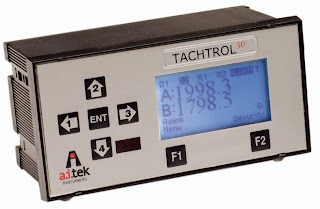 “Display Is Offline” may be displayed on the front panel of a TACHTROL tachometer or remote display. In most cases this is a simple fix. Displays communicate to the tachometer through a local network, created by the tachometer, regardless of if they are part of the instrument (TACHTROL 10 & TACHTROL 30) or as a remote display (TACHTROL plus). Each display must have a distinct address to be properly orchestrated on the network and there can be up to 8, including the TACHTROL instrument display, on any local tachometer network.
“Display Is Offline” may be displayed on the front panel of a TACHTROL tachometer or remote display. In most cases this is a simple fix. Displays communicate to the tachometer through a local network, created by the tachometer, regardless of if they are part of the instrument (TACHTROL 10 & TACHTROL 30) or as a remote display (TACHTROL plus). Each display must have a distinct address to be properly orchestrated on the network and there can be up to 8, including the TACHTROL instrument display, on any local tachometer network.- From the front panel press F2 > Security
- On the drop down menu verify Display Address is not “0”. It can be any number between 1 & 8. If there will be multiple remote displays connected it is best to use 1 for the tachometer.
- If the display address = 0 it must be changed.
- Use the down arrow (4) to navigate to Display Address.
- Press Enter to toggle the address number. Set to the desired number. If there are additional TACHTOL plus units connected, each display must be a different number.
- Press F1 to return to the main screen
Toll Free: 855-288-5330Email: processsales@forberg.com
websites: www.forberg.com & www.autoctrls.com








